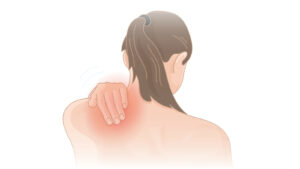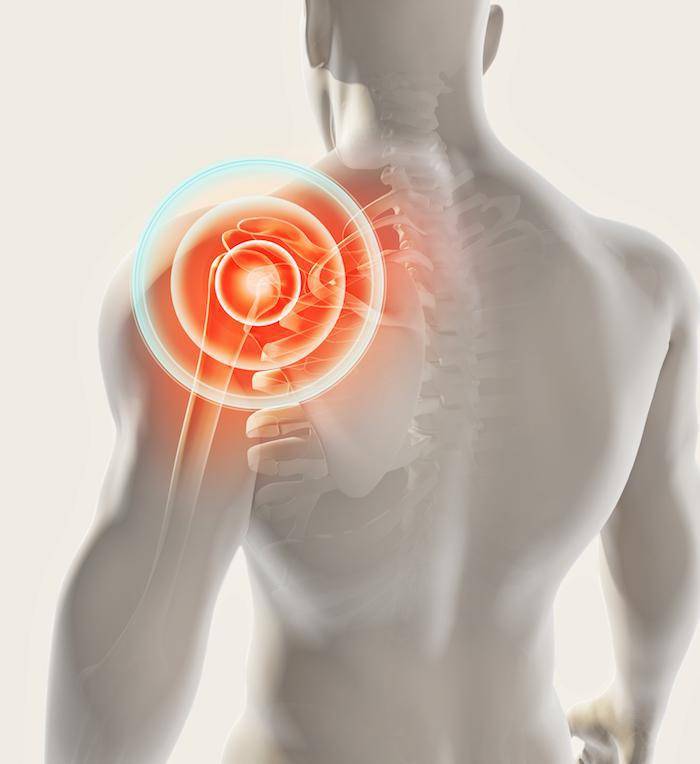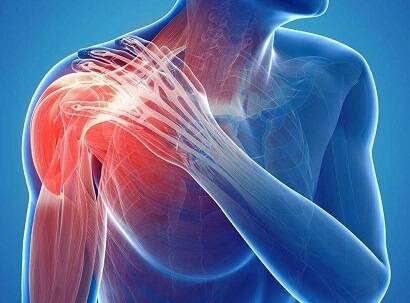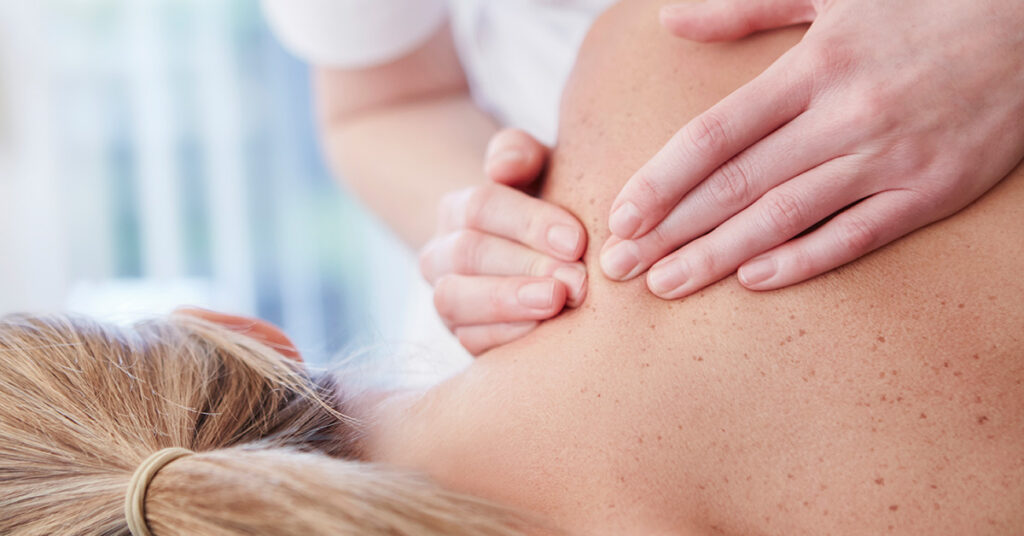Postural pain is a relatively common condition that can affect people of all ages. It’s usually caused by bad posture and excessive use of muscles in the back and neck. Posterior shoulder pain is one variation of this type of pain, and it can be extremely debilitating. If you’re experiencing posterior shoulder pain, then this comprehensive guide is for you. In it, we will discuss the various causes and treatments of posterior shoulder pain, as well as the various lifestyle changes that can help you get relief. We will also provide tips on how to prevent or treat this condition so that you can live a comfortable life without the pain.
Contents
What is Posterior Shoulder Pain?

Posterior shoulder pain is a type of shoulder pain that is located on the posterior (back) side of the shoulder. This type of shoulder pain can occur when there’s too much pressure on the rotator cuff muscles and tendons in the back of the shoulder. This type of pain is often caused by repetitive motions or exercises that put too much pressure on these areas. Other causes include arthritis, tennis elbow, and labral tear.
Sometimes, posterior shoulder pain is a sign that something else is wrong with the shoulder, and you should see a doctor. If you have posterior shoulder pain, your doctor may recommend exercises to loosen the muscles and tendons in the back of the shoulder. He or she may also prescribe medication to reduce the pressure on these areas.
There are many things you can do to treat this shoulder pain. Some common treatments include rest, ice, ibuprofen, and physical therapy. If the pain is severe or doesn’t go away after treatment, you may need surgery.
Signs of Posterior Shoulder Pain

Posterior shoulder pain is typically caused by a rotator cuff tear, bursitis, or arthritis. Pain may radiate down the arm and into the hand. In some cases, posterior shoulder pain may also be associated with herniated discs or impingement syndrome. The following are eight signs that indicate you may have posterior shoulder pain:
Widespread pain in the back and side of your shoulder blade
One of the most common signs of rotator cuff tear is pain that radiates down the arm and into the hand.
Pain that increases with movement or with the use of the arm
For posterior shoulder pain to be caused by a rotator cuff tear, it must worsen with movement or use of the arm.
Pain when touching your shoulder blade (medial epicondyle)
Posterior shoulder pain may also be caused by compression of the median nerve in the neck. If you have pain when touching your medial epicondyle, this may be a sign of a rotator cuff tear.
Decreased range of motion in your shoulder joint
If your range of motion in your shoulder joint has decreased, this may be a sign that you have this shoulder pain.
Sensitivity to touch or pinching
If you are sensitive to touch or pinch in your shoulder, this may be a sign that you have posterior shoulder pain.
Frequent use of the arm for overhead activities
Feeling like you have to use your arm frequently for overhead activities is another sign of this shoulder pain.
Dizziness or lightheadedness when you lift your arm overhead
If you experience dizziness or lightheadedness when you lift your arms overhead, this may be a sign that you have posterior shoulder pain.
A dull, aching pain in the back of the shoulder that may radiate down the arm
One of the most common signs of this shoulder pain is a dull, aching sensation in the back of the shoulder that may radiate down the arm. This pain is often worse at night or when lying down, also making it difficult to get a good night’s sleep.
Stiffness and decreased range of motion
Posterior shoulder pain can also lead to stiffness and decreased range of motion in the affected shoulder. This may make it difficult to perform everyday activities such as reaching for items on a shelf or brushing your hair.
Weakness in the affected arm
Another common symptom of posterior shoulder pain is weakness in the affected arm. This weakness may make it difficult to lift objects or perform other activities that require arm strength.
Constant pain that is worse with activity
If you have posterior shoulder pain, you may also experience constant pain that gets worse with activity. This pain may make it difficult to participate in activities you once enjoyed, such as playing sports or working out at the gym.
Numbness or tingling in the arm or hand
Sometimes posterior shoulder pain can cause numbness or tingle in the arm or hand. This may be caused by compression of the nerves in the shoulder.
Causes of Posterior Shoulder Pain

Reasons for this shoulder Pain can be due to any type of injury or condition that affects the back of the shoulder. Some common causes include:
Rotator Cuff Tears
One of the most common reasons for this shoulder pain is a rotator cuff tear. A rotator cuff is a group of muscles and tendons that surround the shoulder joint and help to stabilize the joint. A tear in the rotator cuff can cause pain and weakness in the affected arm. There may be many causes for a rotator cuff tear including:
- aging
- repetitive overhead motions
- falls
- sports injuries
Biceps Tendon Tears
Another possible cause of this shoulder pain is a tear in the biceps tendon. The biceps tendon is a thick rope-like structure that attaches the biceps muscle to the shoulder. This muscle helps you bend your elbow and rotate your arm. A tear in the biceps tendon can occur with a sudden injury, such as falling on an outstretched arm, or from gradual wear and tear (overuse).
Also, the tendons that attach the shoulder blade to the upper arm bone (the rotator cuff) can become irritated or inflamed. This condition is called shoulder impingement, bursitis, or tendinitis.
Arthritis
One of the most common causes of shoulder pain, especially this shoulder pain, is arthritis. There are many different types of arthritis, but the two most common types that affect the shoulder are osteoarthritis and rheumatoid arthritis.
Also referred to as degenerative joint disease, osteoarthritis is a type of arthritis that occurs when the cartilage in the joints starts to break down. This can happen for a variety of reasons, including age, injury, or genetics. When the cartilage breaks down, it can cause pain, stiffness, and inflammation in the joints.
Aging
Another cause of this shoulder pain is the aging process. As we age, the tendons and muscles around our shoulder joint begin to weaken. This can lead to a condition called rotator cuff tendinitis, which is a common cause of posterior shoulder pain in older adults.
As we age, the rotator cuff tendons and bursa can become inflamed, causing pain in the posterior shoulder. Rotator cuff tendinitis is a common cause of posterior shoulder pain in older adults.
Diagnosis of Posterior Shoulder Pain
This shoulder pain is a type of pain that can be felt in the back of the shoulder region. This type of pain is often caused by a rotator cuff tear, which is a common injury among athletes. In some cases, posterior shoulder pain may also be caused by other conditions, such as carpal tunnel syndrome or arthritis.
To diagnose posterior shoulder pain, your doctor will perform a physical examination and may also ask you about your symptoms. He or she may also perform an X-ray to see if there is any evidence of a rotator cuff tear.
Throughout the diagnosis of this shoulder pain, your doctor will work to determine the cause of the pain and develop a treatment plan that is tailored to your individual needs. Sometimes, surgery is necessary to correct the underlying injury.
Treatment of Posterior Shoulder Pain

Treating this shoulder pain generally involves taking steps to reduce inflammation and pain. This may include :
Medications
There are a variety of medications that can be used to treat this shoulder pain. In general, the goal of treatment is to provide relief from pain and allow the patient to return to normal activities. Most patients will need to take multiple medications over time to achieve these goals.
Some of the most commonly prescribed medications for this shoulder pain include:
-TENS units: These devices are often used in conjunction with other treatments, such as massage, Chiropractic adjustments, and heat therapy, to provide long-term relief from pain. TENS units work by sending an electrical current through the skin and into the muscles. This can cause muscle spasms, which in turn reduces pain. Side effects may include skin redness and numbness.
-Acetaminophen (Tylenol): Acetaminophen is a common over-the-counter medication that is often used to relieve minor aches and pains. It is also effective at reducing inflammation and swelling. One downside of acetaminophen is that it can be habit-forming if taken regularly over time. Side effects may include drowsiness, nausea, and headache.
-Nonsteroidal anti-inflammatory drugs (NSAIDs): NSAIDs are one of the most commonly prescribed classes of medications for treating pain. They work by blocking inflammation and reducing damage to cells. Some examples of NSAIDs available over the counter include ibuprofen (Advil, Motrin).
Surgery
There are a few different types of surgery that could be used to treat this shoulder pain. These include arthroscopic surgery (also called an “arthroscopy”), which uses small instruments to fix the problem; open surgery (also called “open arthroscopy”), which involves making an incision in the skin and muscle; and repair surgery (also called “repairer surgery”), which combines one or more of these techniques. There are also non-surgical treatments available, such as physical therapy and medications.
Physical Therapy
Physical therapy can help improve the symptoms of posterior shoulder pain and restore function to the arm.
Also, Physical therapy may include exercises to stretch and strengthen the muscles around the shoulder, as well as techniques to reduce inflammation.
Summary
Posterior shoulder pain is typically described as discomfort or soreness in the back of the shoulder blade area, below the neck. This type of pain can be caused by several factors, including rotator cuff tears, bursitis, inflammation, and arthritis.
If you experience any type of discomfort or soreness in your back or upper arm area, you likely have posterior shoulder pain. To determine if you have this type of problem, describe your symptoms to a doctor. Additionally, if you notice any changes in your range of motion or difficulty lifting your arm above your head, it’s also worth consulting with a doctor. We provide effective shoulder pain treatment.
Physical Therapy help patients recover from pain. If you’re experiencing Back pain, Shoulder pain, Knee pain, Neck pain, Elbow pain, Hip pain, or Arthritis pain, a physical therapist at MantraCare can help: Book a physiotherapy session.


